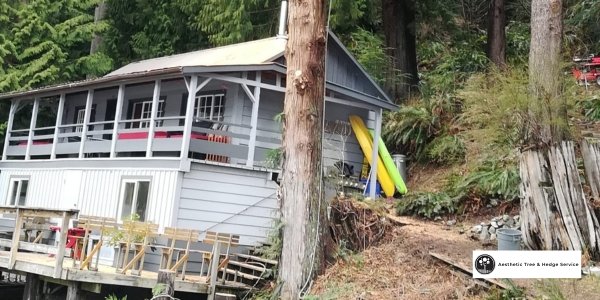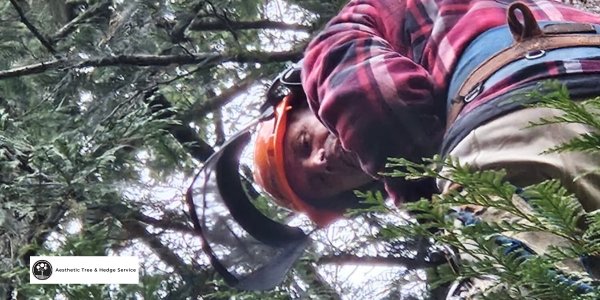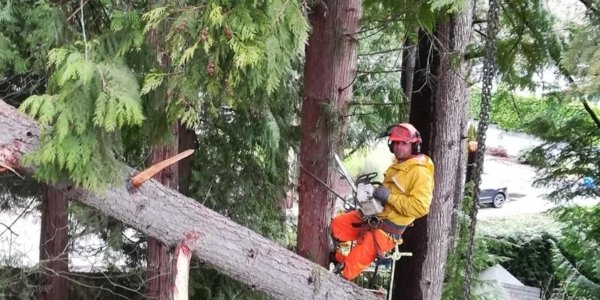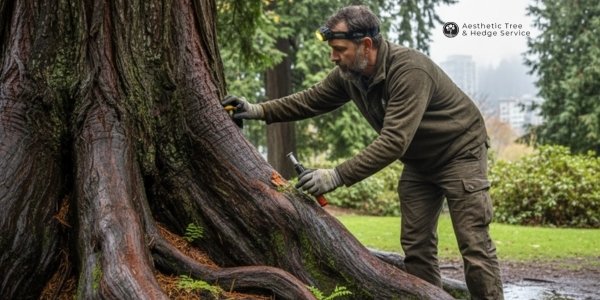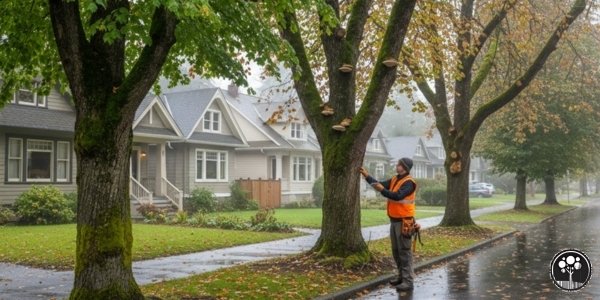Landscaping trees are a crucial part of any outdoor space, providing aesthetic appeal, shade, and environmental benefits. However, like any living organism, trees require regular care and attention to thrive. Neglecting landscaping trees can lead to serious consequences, both for the health of the trees themselves and the overall condition of your property.
In this blog, we will explore the consequences of neglecting landscaping trees, including issues like disease, structural damage, and safety hazards. We’ll also cover when to call a professional arborist to help maintain your trees and prevent long-term damage.
The Importance of Regular Tree Care for Landscaping Trees
Trees need regular maintenance to stay healthy and continue contributing to your landscape. Without proper care, they can quickly become susceptible to disease, pest infestations, and structural issues that can threaten their stability.

1. Increased Risk of Disease and Pests in Landscaping Trees
One of the most significant consequences of neglecting landscaping trees is the increased risk of disease and pest infestations. Without regular monitoring and maintenance, trees can become vulnerable to a range of pathogens and insects that can severely damage or even kill them.
How Disease Affects Landscaping Trees
Neglecting landscaping trees can lead to the unchecked spread of diseases like root rot, cankers, or fungal infections. These diseases often go unnoticed until the tree starts showing visible signs of distress, such as yellowing leaves, bark peeling, or dead branches. By the time these symptoms appear, the disease may have already caused irreversible damage to the tree.
Common Pests That Attack Neglected Trees
Pests such as aphids, beetles, or borers can target weakened or neglected trees. These pests feed on the leaves, bark, and wood, further weakening the tree and making it more susceptible to other stress factors. Severe infestations can eventually kill the tree if left untreated.
When to Call a Professional: If you notice early signs of disease or pest infestations in your landscaping trees, it’s essential to call a professional arborist. They can accurately diagnose the issue and recommend treatment options to prevent the problem from spreading to other trees in your landscape.
2. Structural Weakness and Safety Hazards in Overgrown Landscaping Trees
Neglecting trees can lead to significant structural issues that pose safety hazards for people, property, and nearby infrastructure. Without regular pruning and assessment, branches can become weak, unstable, or overgrown, increasing the risk of falling limbs or even complete tree failure.
Falling Branches in Unpruned Landscaping Trees
One of the most common consequences of tree neglect is the risk of falling branches. Dead, dying, or weakened branches can fall without warning, potentially causing injury or property damage. Large, overgrown branches can also become hazardous in high winds or during storms, further increasing the likelihood of breakage.

Tree Uprooting from Weak Landscaping Trees
In severe cases, neglect can lead to a tree becoming so structurally compromised that it uproots during storms. This is particularly dangerous for large landscaping trees close to buildings, roads, or power lines. Uprooted trees can cause extensive damage and may require emergency removal to prevent further hazards.
When to Call a Professional: If your landscaping trees have dead or overgrown branches, or if you notice cracks or other structural issues, it’s time to consult a professional. Regular pruning and assessment can prevent safety hazards before they become emergencies.
3. Declining Aesthetic Value of Landscaping Trees
A neglected tree often shows visible signs of decline, which can significantly reduce the aesthetic value of your landscape. Trees with dead branches, sparse foliage, or uneven growth not only detract from the beauty of your property but can also lower its value.
Unhealthy Appearance of Neglected Trees
When trees are not properly pruned, they can develop an uneven or overgrown appearance. Dead branches and diseased leaves create an unsightly look, and the tree may become lopsided as growth is concentrated in certain areas.
Impact on Property Value of Unmaintained Landscaping Trees
Healthy, well-maintained landscaping trees contribute significantly to curb appeal and overall property value. On the other hand, neglected trees that are visibly in poor condition can decrease the attractiveness of your home or business, potentially making it harder to sell or rent.
When to Call a Professional: A professional arborist can help maintain the beauty and health of your landscaping trees through regular pruning, shaping, and disease prevention. Proper maintenance not only enhances the visual appeal of your landscape but also ensures your trees continue to grow strong and healthy.
4. Increased Risk of Soil Erosion Due to Neglected Trees
Trees play a critical role in stabilizing the soil, particularly on sloped properties or areas prone to heavy rainfall. Neglecting tree care can weaken the root systems, increasing the risk of soil erosion. Over time, this can lead to significant landscape damage, including loss of topsoil, which can be costly and time-consuming to repair.
Weakening Root Systems in Neglected Trees
Trees with damaged or weakened root systems are less effective at anchoring the soil. When landscaping trees are neglected and begin to die, their roots no longer hold the soil in place, leaving it vulnerable to erosion caused by wind or water.
Soil Displacement Around Landscaping Trees
Soil erosion can also lead to the displacement of nutrients essential for other plants and vegetation in the landscape. This can create an unhealthy environment for your garden and lawn, further deteriorating the overall quality of your outdoor space.
When to Call a Professional: If you notice soil erosion near trees or plants in your landscape, it’s important to seek professional help. An arborist can assess the health of your trees and recommend solutions to strengthen the roots and stabilize the soil, preventing further erosion.
5. Reduced Environmental Benefits from Unhealthy Landscaping Trees
Trees provide many environmental benefits, including improving air quality, supporting local wildlife, and offering shade to reduce energy costs. However, neglected landscaping trees that become unhealthy or die will no longer offer these valuable contributions to the environment.
Loss of Shade and Cooling Benefits
Healthy trees help reduce the heat island effect in urban environments by providing shade and cooling the surrounding air. Neglected landscaping trees that die or lose their foliage are no longer able to perform this function, potentially increasing energy costs for cooling your home.
Decreased Air Quality from Dying Trees
Landscaping trees play a crucial role in filtering pollutants from the air and producing oxygen. When trees are unhealthy, they are less effective at performing these functions, which can negatively impact the air quality in your yard and the surrounding area.
When to Call a Professional: If your trees are showing signs of stress, such as wilting leaves or dead branches, it’s important to consult with a professional. A certified arborist can assess the tree’s health and recommend appropriate treatments to restore its environmental benefits.

The Importance of Tree Care for a Healthy Landscape
Neglecting landscaping trees can lead to a host of problems, including increased disease susceptibility, structural hazards, aesthetic decline, soil erosion, and reduced environmental benefits. By maintaining a regular care routine that includes pruning, watering, monitoring for pests, and soil health assessments, you can ensure that your trees stay healthy and vibrant for years to come.
It’s always a good idea to call in a professional arborist when dealing with significant tree care issues, from disease management to safety hazards. Their expertise can help you prevent long-term damage and maintain the beauty, safety, and value of your landscape.
By prioritizing tree care, you not only protect your investment but also contribute to a healthier, more sustainable environment for your property and community.
